Mask Item Number: Z 11444 from the MAA: University of Cambridge
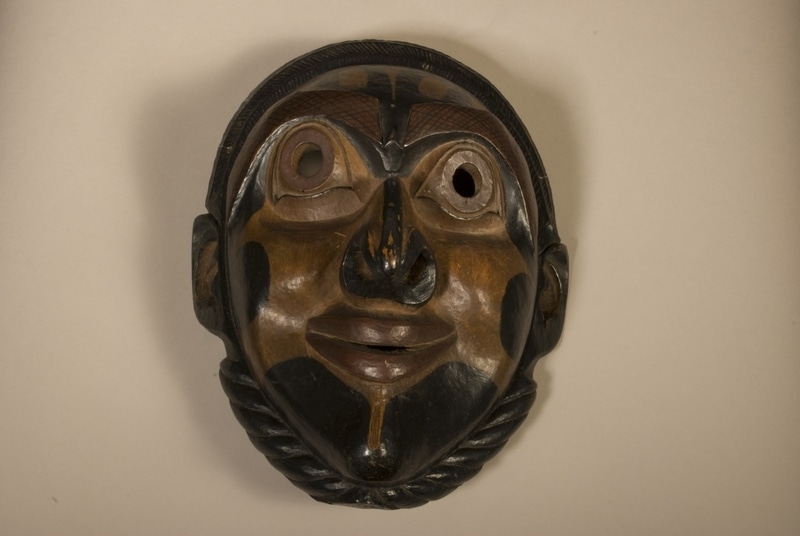
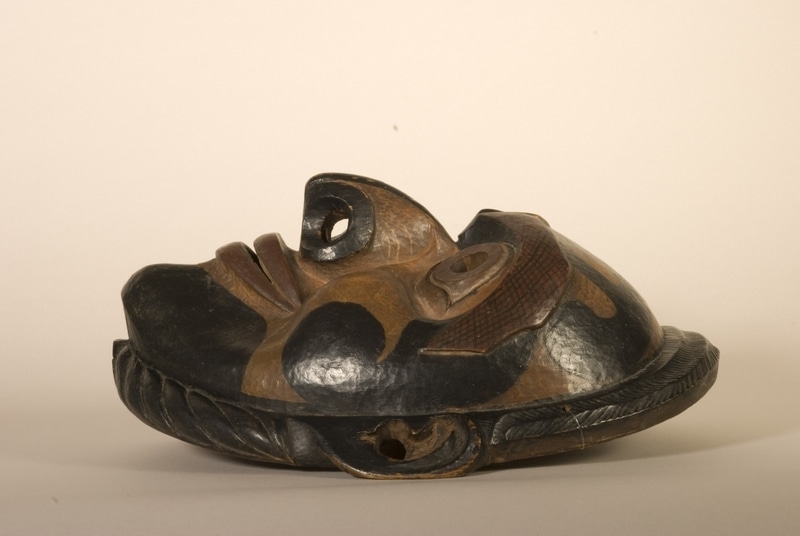
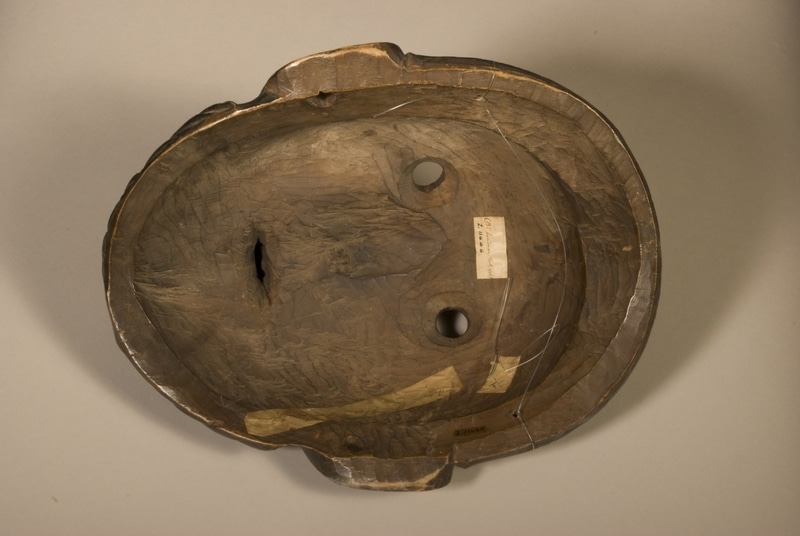
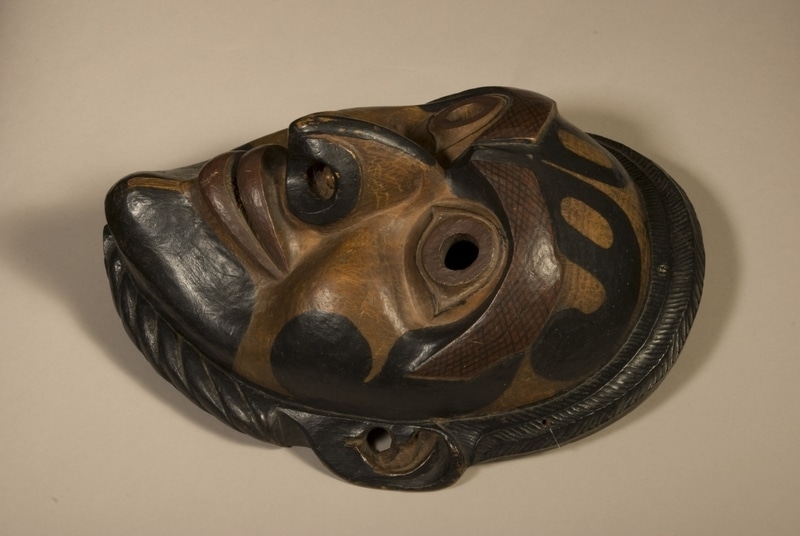
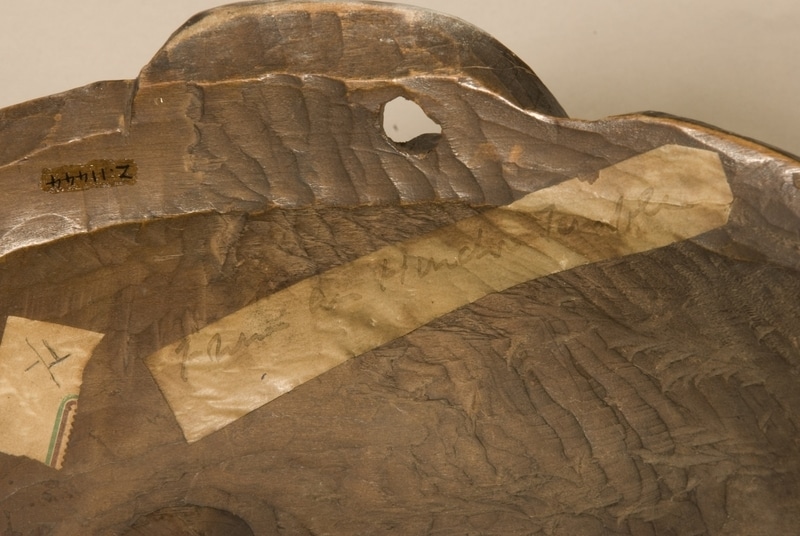
Description
A carved and painted mask in the form of the noohlmahl, or fool. The mask is characterised by a large nose with flared nostrils, the cheek bones are high and rounded, the mouth upturned in a grin and the chin is pointed. The eyebrows are large, and painted red with cross-hatching while the eyes are rounded and staring. Around the edge of the mask is a carved rim, at the top appears to be carved in the form of hair, while below the pierced ears the rim has the appearance of twisted rope. Themask is painted, the lips and the eyes are red, the rim is black, and the forehead has two black curling designs with a central ovoid, similar curling designs extend below the eyebrows and accentuate the cheeks. The chin is similarly painted black, with a central cleft which accentuates the pointed appearance, the nostrils are also outlined in black to a similar effect. The inside of the mask has been finished to a high degree.; Good
Context
On the catalogue card it states, From the Central Area, with some Northern features, including the cross hatched eyebrows and feather designs on forehead. This information came from F.K.Sommer 3rd of Yale. Northern Kwakiutl or Bella Bella provenance given by Marie Mauze, - 11 1990. The original European tribal names and, where possible, current tribal names have both been given in separate GLT fields.; The noohlmahl or fool dancer was a companion of the hamatsa or cannibal dancer, acting as messengers and keepers of order. The keeping of order was antithetical to their own behaviour which was loud, unruly, and involved damaging property (compensation for the damage was later paid) and shoving crowds of people back into line. The noohlmahl were sensitive to their appearance, becoming outraged by comments about their large noses and caused a certain amount of comic entertainment during the winter ceremonials (G.Crowther). Holm, in The Box of Daylight (1983, University of Washington Press: Seattle) page 36 notes that the physical form of the mask could represent an actual malformation, the Treacher-Collins syndrome, or could be derived from carvings of lions on European ships, to which they are very similar.; Exhibited: Old anthropological displays at CUMAA, case 21, 22, no.21, dismantled 081986.
Item History
- Made in British Columbia, Canada
Who
- Culture
- Kwakwaka'wakw ? or Heiltsuk ?
Where
- Holding Institution
- MAA: University of Cambridge
- Made in
- British Columbia, Canada
When
- Acquisition Date
- “?- - 1906; ?- - 1907” ?
Other
- Keyword
- Masques and Drama; Ceremonial Objects